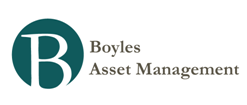Mason Hawkins and Staley Cates on Today’s Opportunities for Value Investors - By Robert Huebscher
Your shareholder letters often refer to the portfolio's discount to appraised value. Can you share with us some of the methodology you use to determine appraised value?
[Hawkins:] Business appraisals are the core of our being. We have three methodologies that we have applied for over 35 years. They were the genesis of Southeastern Asset Management, and we have inculcated Graham and Dodd principles into these three approaches.
The first approach is balance-sheet oriented and determines what a business would be worth upon liquidation. It sums up the assets, subtracts the liabilities after adjusting for today's values versus historical cost accounting, and then divides by shares. This evaluation comes up with what we believe is a conservative net asset value.
The second methodology is an attempt to assign a value to the business' free cash flow generation. There are many parts to this methodology that have to be calculated conservatively. The first is the current coupon of the business – its free cash flow generation per share. Free cash flow by our description is net income plus all the non-cash charges- depreciation, depletion, amortization, and deferred taxes - minus required or maintenance capital spending and working capital charges.
We are attempting to derive the free cash flow coupon that you could put in your pocket as an owner while allowing the company to remain competitively positioned.
We project cash flows out about eight years – usually never more than the past growth rate. We use a terminal multiple in the eighth year, based on 0-2% growth going forward. We then discount the terminal value and the eight individual years of cash coupons at a discount rate, which today is typically not less than 8.5%. That result gives us a value for the company's ongoing future cash flows. I want to emphasize that we use this second appraisal method for businesses that are truly franchises, are competitively positioned, and have predictable future streams. You don't want to mislead yourself by incorrectly applying this discipline to businesses with uncertain future cash flow.
The third methodology, comparable sales, is basically a check on the first two. We have recorded the metrics of going-private transactions, mergers and acquisitions, liquidations, etc. over the 35-year history of Southeastern Asset Management. These actual comparable transactions are logged, and we are mindful of and adjust for the interest rate environment when those transactions occurred. Obviously, merger metrics in 1981 or 1982, when long-term Treasurys were 15% or so, are not comparable to merger multiples today, when 15-year Treasurys are around 4%.
We compare those comparable sale yardsticks to the net asset value appraisal or the DCF appraisal. Normally we use the lower of those two.
At Southeastern Asset Management, we are our largest client because of our collective personal investments in the Longleaf Partners Funds. You see your boss in the mirror each morning, and you're not trying to trick that person. You want to be very conservative with your appraisals.
As you know, we endeavor not to pay more than 60% of that conservative appraisal, trying to create a big margin of safety of value over price, as Ben Graham described. We pound that price discipline into everybody via his books, Security Analysis and The Intelligent Investor.
Those three methods describe how we go about hanging a number on a business. Obviously there are certain companies where we don't have either the proper view of the future or the adequate facts to do an appraisal. It is very important to pass on opportunities when you can't calculate a conservative assessment of the business's value.
………………..
Related previous post: Cash Flow Analysis: A Private Lesson from Staley Cates
- Seth Klarman Ebitda Example
From Margin of Safety:EBITDA Analysis Obscures the Difference between Good and Bad BusinessesEBITDA, in addition to being a flawed measure of cash flow, also masks the relative importance of the several components of corporate cash flow. Pretax earnings...
- Two Celebrated Investors Want To Fix Their Funds--and Chesapeake Energy
Thanks to Matt for passing this along. Nothing tests the mettle of a value investor like watching a large portfolio holding slowly and steadily meltdown. Yet that’s exactly what happened last spring to Mason Hawkins and his partner, Staley Cates, the...
- Longleaf Partners Funds 4th Quarter Letter
The fourth quarter volatility gave long-term investors terrific opportunities to pursue. Short-term, prices suffered, particularly in the two domestic funds. While negative performance is frustrating, falling prices are not necessarily worrisome. As patient,...
- Olstein Funds Annual Report
Olstein's Top Twenty Quality of Earnings Alerts - 1. Material deviations between net income and free cash flow 2. Material differences between the tax books and shareholder books as measured by deferred taxes 3. Material changes in balance sheet debt...
- So, What's Berkshire Worth Anyway?
It seems to be pretty clear to most value investors that Berkshire Hathaway is a bargain. But, how big of a bargain is it and how much can we expect to make over the next few years by purchasing a stake in Warren Buffett's masterpiece today? I view...

